Gazing skyward, one may chance upon the majestic sight of a hornbill in flight, its vivid plumage and formidable bill captivating the observer. Found in Africa and Asia, these birds are not merely ornamental but ecological linchpins.
With their distinctive features, including the iconic casque atop their bills, hornbills defy convention and intrigue seekers of avian knowledge.
Delving into their world reveals a tapestry of remarkable behaviors, from lifelong monogamy to the extraordinary practice of nest-sealing. Beyond their aesthetic allure lies a story of ecological significance and evolutionary marvel.
Join me on a journey to unravel the mysteries and marvels of these extraordinary creatures – the hornbills.
Different Species of Hornbills
Hornbills are a fascinating family of birds known for their distinctive features, including iconic long bills often adorned with casques. With approximately 55 recognized species, they exhibit a remarkable diversity across various regions of the world.
Let’s delve into the fascinating world of some of the notable species within this avian family:
Great Hornbill (Buceros bicornis)
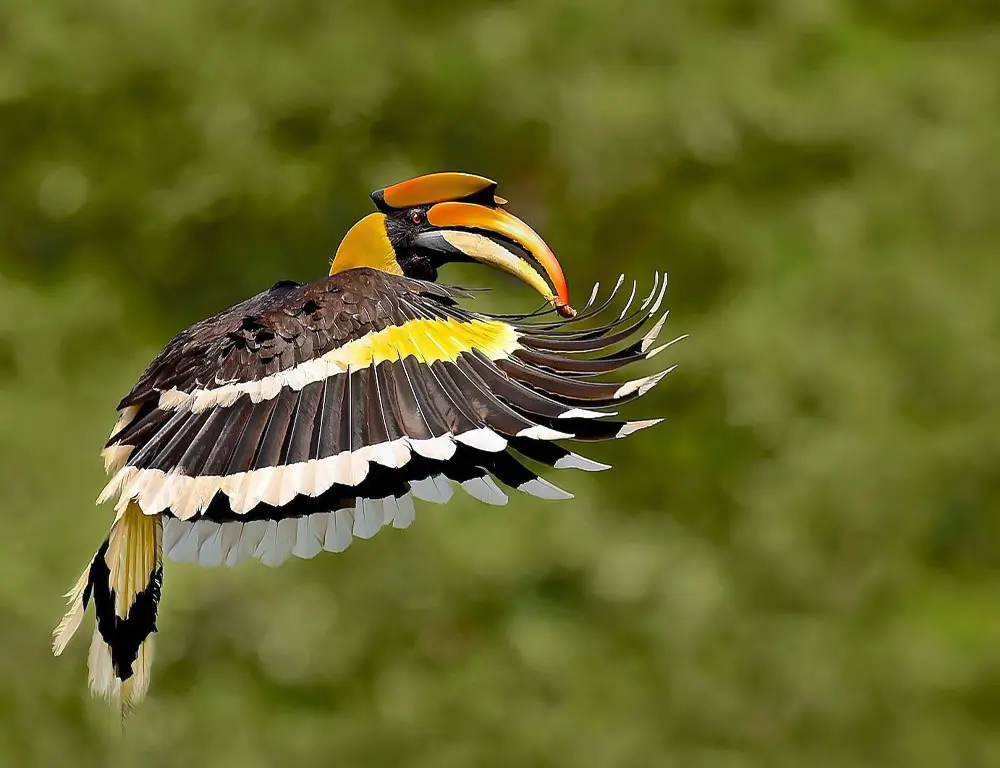
- Region: South and Southeast Asia
- Size: Large, with a wingspan of up to 60 inches
- Status: Vulnerable
- Description: The Great Hornbill is an iconic symbol of the Asian forests, characterized by its massive size and colorful casque atop its long bill. It is crucial in seed dispersal within its habitat, primarily feasting on fruits.
Helmeted Hornbill (Rhinoplax vigil)
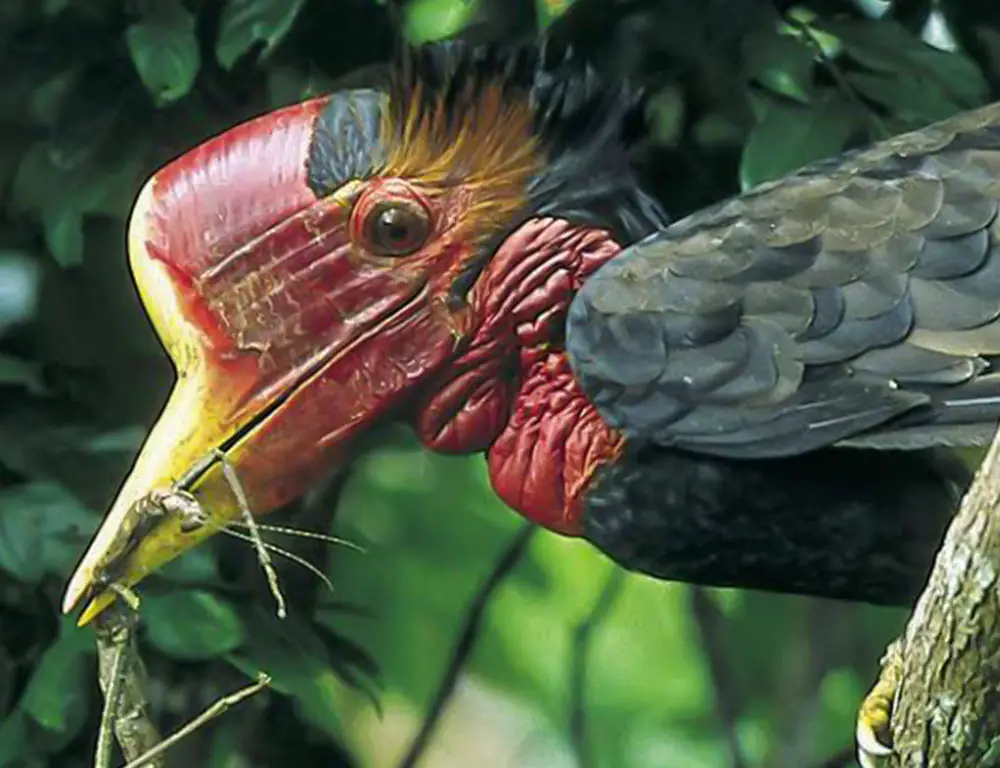
- Region: Borneo and Sumatra
- Size: Medium to large
- Status: Critically Endangered
- Description: The Helmeted Hornbill is tragically threatened by illegal wildlife trade due to the value of its solid ivory casque. This species is notable for its unique bill structure and plays a vital role in forest ecology through seed dispersal.
African Grey Hornbill (Lophoceros nasutus)
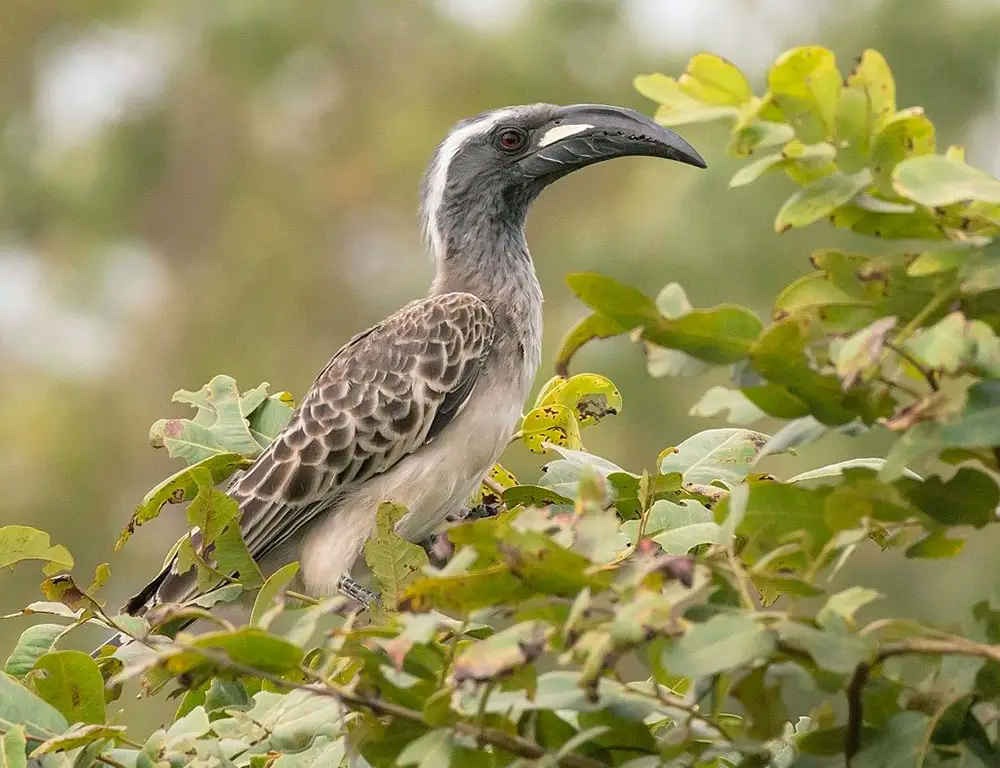
- Region: Sub-Saharan Africa
- Size: Small to medium
- Status: Least Concern
- Description: The African Grey Hornbill is smaller compared to its Asian relatives but is equally captivating. It thrives in woodland habitats and is known for its distinctive call and omnivorous diet, which includes insects, fruits, and small vertebrates.
Southern Ground-Hornbill (Bucorvus leadbeateri)
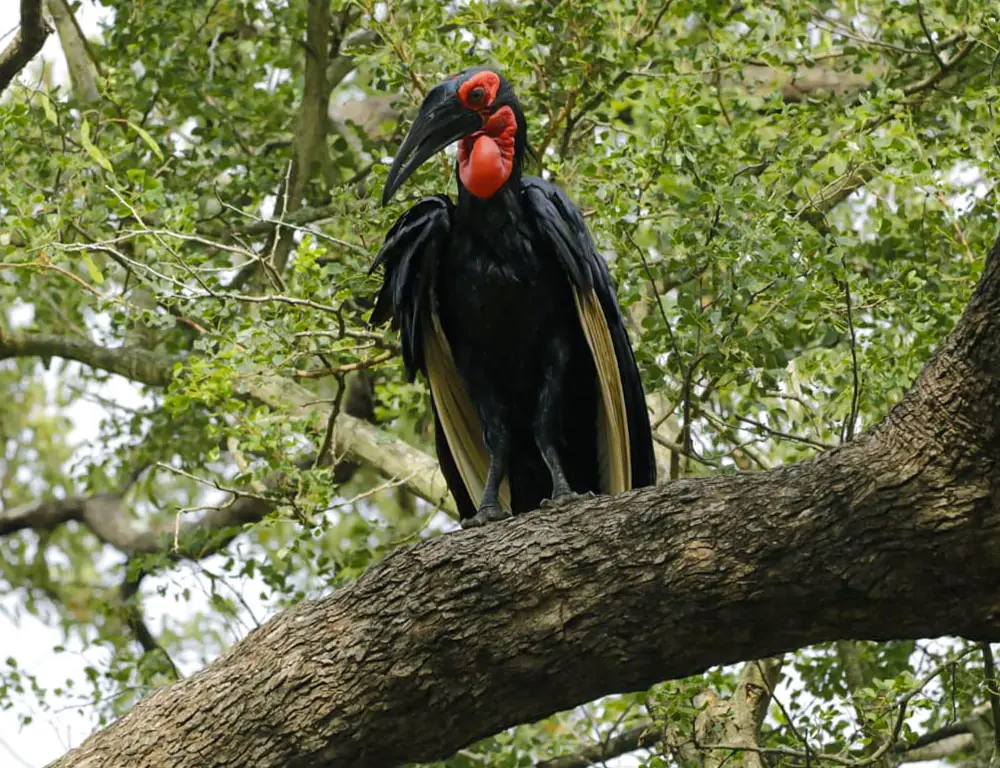
- Region: Southern Africa
- Size: Large
- Status: Vulnerable
- Description: Unlike other hornbills, the Southern Ground-Hornbill prefers a terrestrial lifestyle, foraging on the ground for insects, small mammals, reptiles, and even other birds. They are highly social birds, often seen in family groups.
Narcondam Hornbill (Aceros narcondami)
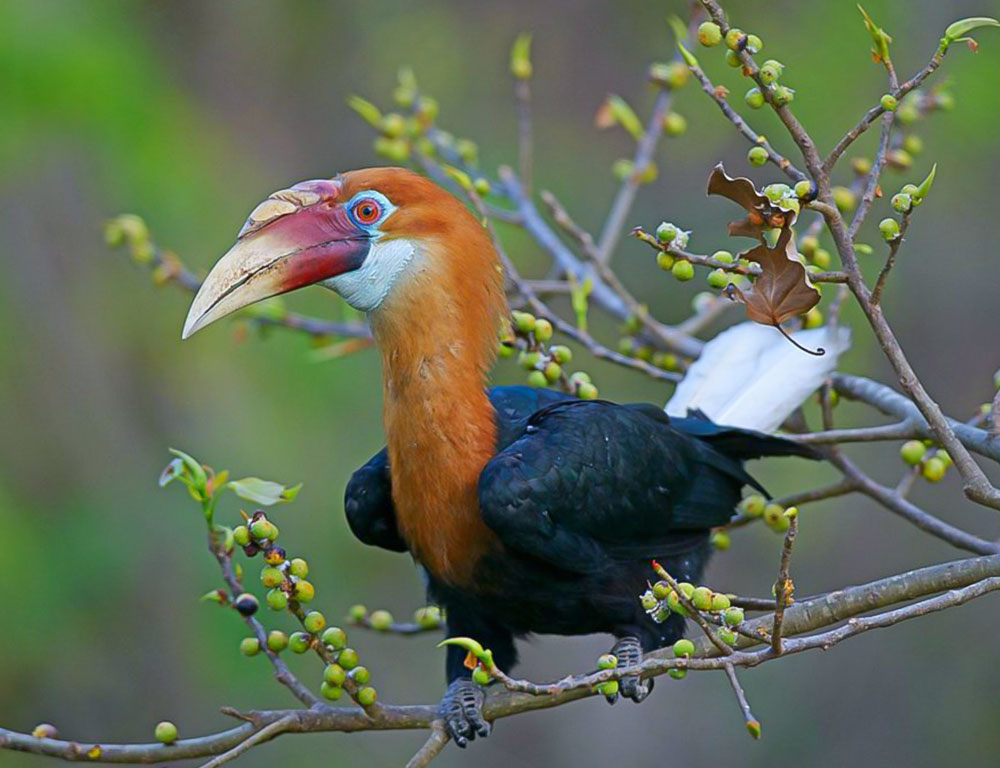
- Region: Narcondam Island, India
- Size: Small to medium
- Status: Near Threatened
- Description: Endemic to Narcondam Island, this hornbill species is characterized by its unique habitat and limited population size. Conservation efforts are crucial for its survival due to habitat loss and other threats.
Physical Characteristics of Hornbills
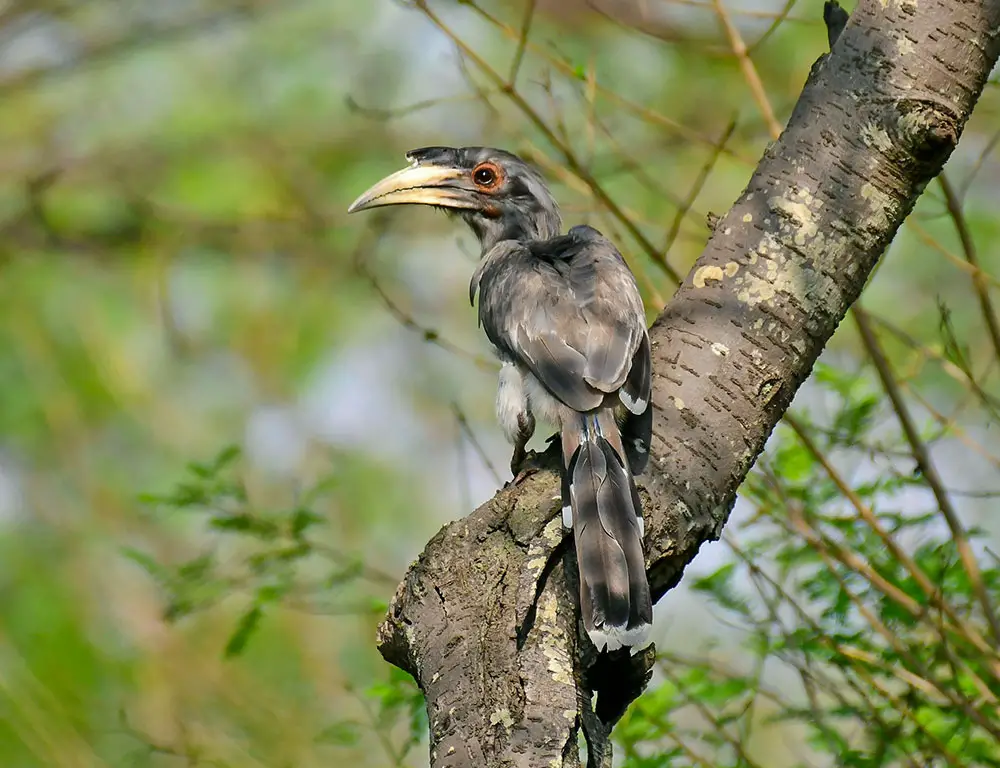
Hornbills are truly remarkable birds with distinctive physical characteristics that make them easily recognizable in their natural habitats.
Here’s a summary of their notable physical features:
Large, Downward-Curved Bill
The most prominent feature of hornbills is their large, downward-curved bill. This bill is often brightly colored and adorned with intricate patterns, making it visually striking.
Additionally, many hornbill species have a casque a hollow structure on top of the bill—which varies in size and shape among different species.
Size Variation
Hornbills exhibit a wide range of sizes among different species. The smallest species, such as the Red-billed Dwarf Hornbill, may measure around 12 inches in length, while the largest species, like the Great Hornbill and Rhinoceros Hornbill, can reach impressive lengths of up to 51 inches from head to tail.
Plumage
Hornbills typically display plumage in black, white, or grey shades. However, some species feature vibrant blue, green, and red feathers. For instance, the Southern Yellow-billed Hornbill is known for its bright yellow beak contrasted against stark black feathers.
Long Eyelashes
Hornbills possess long eyelashes, which are modified feathers. These eyelashes protect their eyes from dust and debris while foraging for food in trees and on the ground.
Unique Nesting Behavior
One of the most intriguing aspects of hornbills is their peculiar nesting behavior. Female hornbills seal themselves into tree holes using mud, droppings, and other materials, creating a secure nesting chamber.
During this time, the male hornbill provides food to the female and chicks through a small hole in the nest until the chicks are ready to fledge.
Habitat and Diet of Hornbills
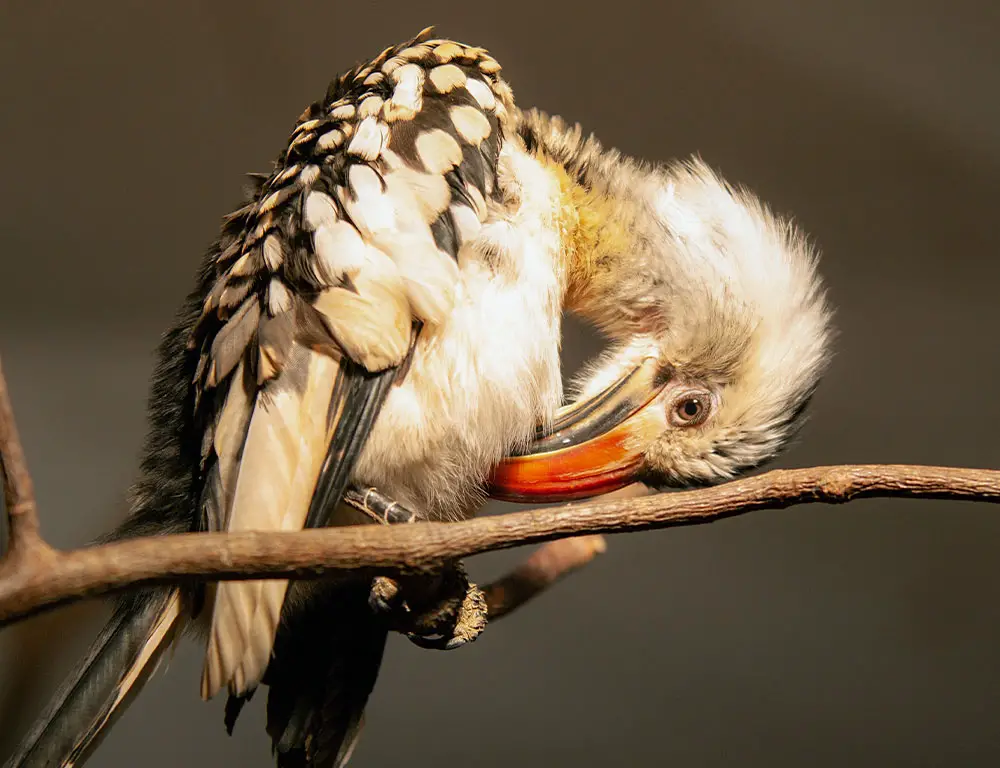
Hornbills are fascinating birds renowned for their large bills and striking appearance. Their habitat and diet reflect their adaptability and unique ecological niche.
Habitat
- Tropical and Subtropical Regions: Hornbills are found in tropical and subtropical areas across Africa, Asia, and Melanesia.
- Diverse Environments: They inhabit various environments, including savanna grasslands, dense rainforests, and sometimes even human settlements.
- Preference for Large Trees: Hornbills typically reside in areas with large trees that serve as nesting sites and food sources. They are particularly adapted to forested habitats.
Diet
- Frugivorous (Fruit-Eating): Hornbills feed on fruits, berries, and seeds. Fruits form the staple part of their diet.
- Supplementary Diet: Some species supplement their fruit-based diet with protein-rich foods such as insects, small reptiles, and occasionally birds.
- Occasional Carnivory: Larger species like the Great Hornbill have been observed preying on small mammals, showcasing occasional carnivorous behavior.
- Eclectic Palate: Hornbills exhibit a diverse palate, showing versatility in their food choices depending on availability and opportunity.
Conservation Efforts for Hornbills
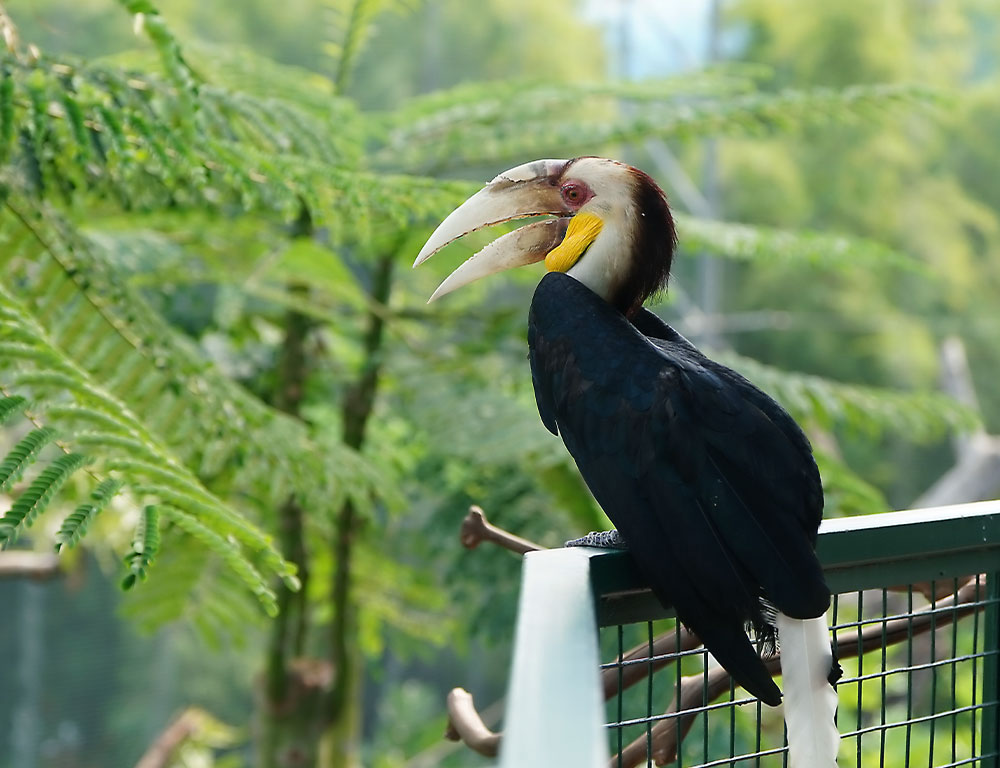
Conservation efforts for hornbills are indeed crucial, given the challenges they face. Here’s a summary of some of the initiatives mentioned:
IUCN Red List
The International Union for Conservation of Nature (IUCN) plays a significant role in conservation by categorizing many hornbill species as vulnerable or endangered on their Red List. This classification helps draw attention and resources to their protection.
Grassroots Projects
Various grassroots projects are contributing to hornbill conservation. For example, India’s Hornbill Nest Adoption Program encourages locals and tourists to sponsor hornbill nests financially.
This not only funds conservation work but also raises awareness about these birds.
Innovative Approaches
Innovative approaches in Thailand, such as using artificial nest boxes, help combat habitat loss, one of the biggest threats to hornbill survival. This initiative has shown promising results in increasing breeding success rates among hornbill populations.
Captive Breeding Programs
Many zoos worldwide participate in captive breeding programs for threatened species like hornbills. These programs help maintain genetic diversity and serve as a safeguard against extinction.
Conclusion
With their unique characteristics and ecological roles, hornbills are vital for forest health. Despite their significance, they face threats like habitat loss and poaching. Some species adapt to urban environments, but many struggle.
Conservation efforts are crucial to preserve their cultural and ecological importance. Without hornbills, forests lose vital seed dispersers and cultural symbols. However, there’s hope; ongoing conservation initiatives strive to protect and boost hornbill populations.
Let’s unite to safeguard these magnificent birds to maintain the diversity and richness of our ecosystems. Together, we can ensure hornbills continue soaring and nurturing our forests as the invaluable ‘Farmers of the Forest.’